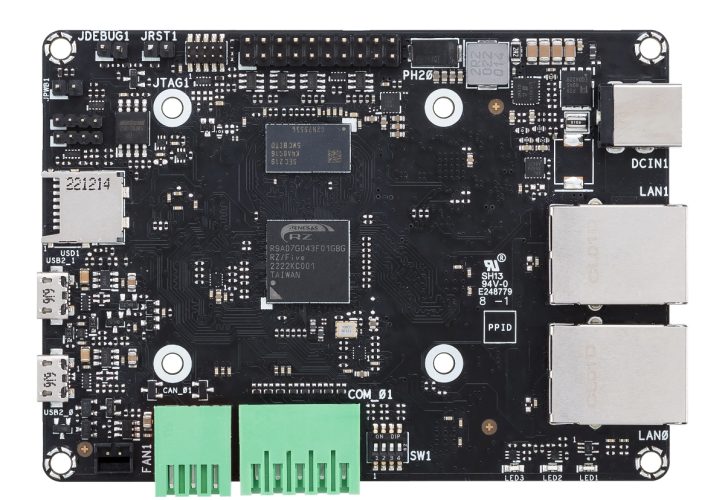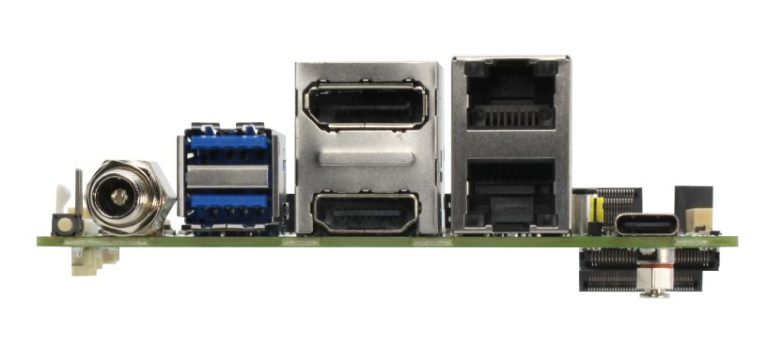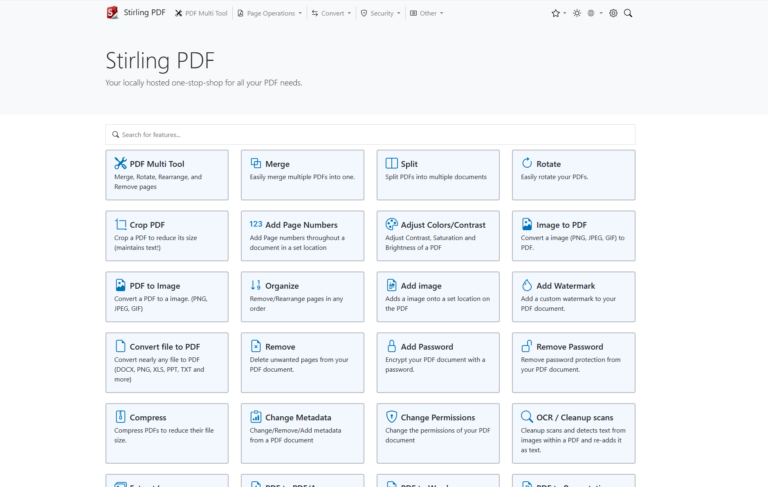5 models that many need, which appeared in March

Recently, manufacturers of electronic systems and components have begun to increase the pace of development and release of new models. This is true, for example, for single-board PCs, in March several models were released at once, which should not be missed. Among them, as usual, there are productive models, and there are specialized devices that do not need high performance. And in the selection – one model with an ARM processor. Well, let’s see what’s new there.
Asus Tinker Board 3 dev board

The first of the five models of single-board models presented in the selection is just specialized. It is positioned as a tool for IoT developers. The system is based on a quad-core Rockchip RK3568 processor. Supports up to 8 GB of RAM, and there is also a microSD card reader. And there is also an optional eMMC storage option, up to 64 GB.
Unfortunately, Asus has not yet announced the price of the device, and the release date of the device is also unknown. But it’s already good characteristics are known. So, three different models will soon appear on sale, with 2 GB, 4 GB and 8 GB of RAM, LPDDR4X. There is a connector for the M.2 E-Key WiFi & Bluetooth module, as well as a PCIe 3.0 x1 connector for M.2 B-Key 4G or 5G modules.
A set of ports and connectors:
- 1 x USB 3.2 Gen 1 Type-C
- 2 x USB 3.2 Gen 1 Type-A
- 2 x USB 2.0
- 1 x 3.5mm audio combo
- 2 x RJ45
There are also 40-pin and 12-pin GPIOs, IR module connectivity, CAN and COM, and fan support if needed. In general, other modules and accessories can be connected to the board, it supports a very large number of different standards.
In general, if you are an IoT developer, perhaps the board will become a reliable tool in the near future.
beagleplay

The BeagleBoard Foundation is by no means new to the single-board market. Over the past few years, this company has released several interesting models, including developers, educators, geeks and god knows who else. Now there is a new model of the device – single-board BeaglePlay.
This is a small and not very productive dev board with a lot of ports and connectors, as well as other things that a developer needs. Its cost, unlike the previous system, is known – it is $99. A lot, but it seems like the pay is worth it.
Characteristics:
• 4 x ARM Cortex-A53 CPU cores @ 1.4 GHz
• 1 x ARM Cortex-M4F @ 400 MHz
• 1 x ARM Cortex-R5F core
• 333 MHz PRUSS (programmable real-time unit subsystem)
• PowerVR Rogue graphics (up to 2048 x 1080 @ 60 fps w/OpenGL ES 3.1 and support for Vulkan 1.2)
In addition, the device is equipped with 2 GB of RAM, as well as 16 GB eMMS. There is a slot for memory cards, plus WiFi, Bluetooth Low Energy, Gigabit Ethernet. Plus, HDMI, USB Type-C and Type-A ports are also worth mentioning.

There are additional connectors that can be used to connect displays, cameras, and other modules and components.
Banana Pi BPI-P2 Pro

Many are waiting for this single-payer, and it will be released soon. In May, we wrote about it – then only the render was ready, but still there was no doubt that the system would go on sale. Now there are already photos and detailed technical specifications. Unfortunately, there is no exact release date for the device and price yet. But the developers promise to release a single-payer in the near future.
Here are the main characteristics of the chip:
- CPU: 64bits Quad-core Arm Cortex-A35 Rockchip RK3308.
- 2G LPDDR2 SDRAM.
- 8G eMMC.
- WiFi (AP6255) & Bluetooth modules.
- 40 PIN GPIO including UART, SPI, I2C, IO.
- 100MLAN.
- IEEE 802.3af PoE standard PoE module.
The processor processes graphics and audio data. Plus, it supports voice activation. This opens up the possibility of using the BPI-P2 Pro as the brains of smart speakers or a voice control system for smart home applications, among other possible use cases.
Asus Tinker V

Asus appears to be turning its attention to the single-board market, as it has already unveiled its second board in a few weeks. Systems of the Tinker line are positioned by the company as a version of the “raspberry” from ASUS. Systems are sharpened, first of all, work in IoT.

The company has several different single-boards, but this one is the first to receive a RISC-V chip, and it’s powerful. The basis of the board is the processor Renesas RZ/Five.
The board is equipped with 1GB of DDR4 memory, a memory card slot, and an optional 16GB eMMC. Here is a list of ports and connectors:
- 2 x GbE Ethernet
- 1 x micro USB
- 1x micro USB (OTG)
- 2x CAN Bus (6-pin)
- 2 x COM RS-232 (5-pin)
There is also a 20-pin GPIO, plus the ability to connect power. The board supports operating systems such as Debian and Yocto Linux.
Everything would be fine, but, unfortunately, the company did not say when this board will be ready and how much it will be priced. But be that as it may, it will soon go on sale, so then we will find out everything.
Up Squared Pro 7000

This is a performance board with 12th generation Alder Lake-N processors. Only Efficiency kernels are used here. They bypass many other chips in performance. Most likely, the board will cost several hundred euros – from $290 and up. This is because it is really productive at a small size of 102 x 102mm.
It will be delivered with different processors:
List of ports and connectors:
- 1 x HDMI 2.0b
- 1 x Display Port 1.2
- 1 x USB 3.2 Gen 2 Type-C
- 2 x USB 3.2 Gen 2 Type-A
- 2 x USB 2.0 Type-A
- 1 x 3.5mm audio
- 2 x 2.5GbE Ethernet
- 2 x RS232/422/485

You may also be interested in these texts:
→ Which network connectivity service should I use: Selectel global router, Direct or Global Connect?
→ How to effectively share the results of your work? About the “boasting” of a healthy person
→ How object stores work: OpenStack Swift
The system can support up to three displays when using HDMI, DisplayPort and USB Type-C ports simultaneously.





